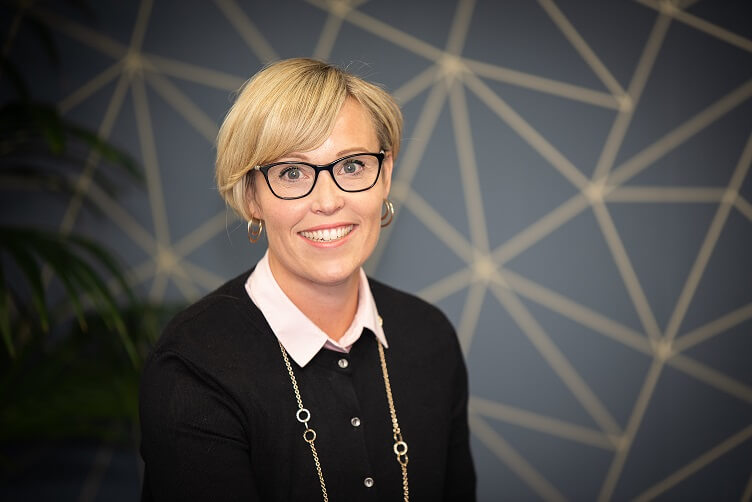Creating an inclusive workplace for a five-generation workforce
When we talk about the challenges of age in the workplace, our first thought often turns to older workers. There are more grey hairs in workplaces than ever before as people work later into their lives. And there’s plenty of evidence that shows they can be overlooked, undervalued and sidelined.
But ageism isn’t limited to older people, and creating an inclusive workplace is about having a mind to all age groups. The wants, needs and interests of workers are different in each generation – and evolve throughout their working lives.
We have been giving a lot of thought to this at Formative, reviewing policies and systems to ensure we are taking the steps we need to so that everyone – from those just starting out to those considering retirement – feels engaged, valued and included.
Some of the changes we have made have been simple fixes, others will take time and are part of a longer, ongoing process of improvement. As with so many aspects of inclusivity, issues around age touch on lots of areas in the business, and so there is always more to do.
Invest in training and building a growth mindset
With five generations now in employment, the workplace is home to an increasingly diverse range of working habits, pressures and drivers.
And research shows that it can be harder for age-diverse teams to bond, as the natural connections forged by shared life dynamics are missing across generations.
Fostering a growth mindset is one way that has been suggested to help break down age barriers and challenge perceptions. This can include things like training, collaboration between departments and rewarding employees for gaining new experience.
Mentoring is another tool that can work. Often, what starts as a more experienced hand showing a less experienced one the ropes, becomes a two-way information flow. It builds relationships and helps develop a mutual understanding.

Age inclusivity starts before you’ve even hired someone
Attitude and culture both play a huge part in age inclusivity. And there are also some concrete steps to take even before you get people through the door.
Your recruitment system needs to be competency-based and unbiased. If people have the smarts you need, you don’t want to rule them out because they don’t fit notions of how and when experience ‘should be’ built up.
Similarly, it’s worth looking at the wider package you are offering. Are the benefits you provide attractive to all ages? Pensions are a classic example here – generous schemes feel far more relevant to those later in their careers.
Policy is another area that needs to be reviewed for age inclusivity. Age is a ‘protected characteristic’ by law and so any diversity, equity and inclusion policies and initiatives should be created with this consideration in mind.
Once the hiring is done, it’s also important to remain sensitive to a potentially diverse range of commitments outside the workplace.
Non-work pressures such as childcare and carer responsibilities, which typically impact mid-career workers the most, can seriously affect people’s ability to work.
And all-company get-togethers or meetings need to be planned so that times, venues and activities don’t rule people out.

Nurture wellbeing
Hybrid working may enable older employees to stay working for longer and please the digital natives of Gen Z, but it’s not without challenges.
For example, how we communicate has taken on greater importance – and different generations have different communication preferences. Setting out guidelines for how information should be communicated, and the best way of reaching people can be helpful. Particularly as it’s not as obvious as it used to be when people are ‘out of office’.
Poor health is one of the most common reasons for people over 50 to leave the workplace, but of course the same can apply to people of any age.
Supporting mental and physical health, and offering the flexibility and space to allow people to cope and recover, is key to enabling them to continue working.
This could take the shape of private health cover, employee assistance programmes and mental health first aiders, as well as cultivating an environment where people feel psychologically safe enough to ask for help.
A 2020 study by the World Economic Forum, the Organisation for Economic Co-operation and Development, and American non-profit AARP, found that investing in a multigenerational workforce will raise GDP per capita by 19% over the next three decades.
But we all benefit from a more inclusive workforce – and not just economically. Making sure each person feels valued and included means you will get the best out of everyone.
READ MORE:
Why diverse teams create better content
From the first cup of Joe to sundowners: What life is like at Formative Content
If you would like to know more about our efforts to create an inclusive workplace, please email erin.harris@formativecontent.com
About the author: Erin Harris is Formative Content’s Senior Director of Coaching and Performance. Connect with her on LinkedIn here.

Related Articles

AI won’t destroy SEO – but it will massively change the game
“The reports of my death are greatly exaggerated,” Mark Twain is said to have told a newspaper reporter.

Should you pay for Twitter Blue?
“What should we do about Twitter Blue?”

We’re buzzing to be a B Corp
Formative Content is now a certified B Corp!

Building on sustainability: Formative joins the UN Global Compact
Making Formative Content a more sustainable business flies high on our list of priorities...



